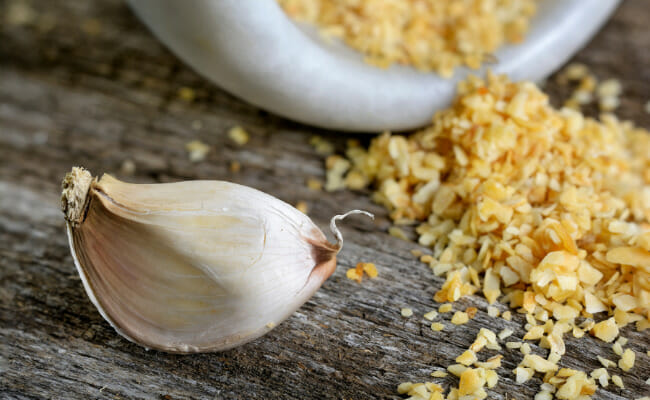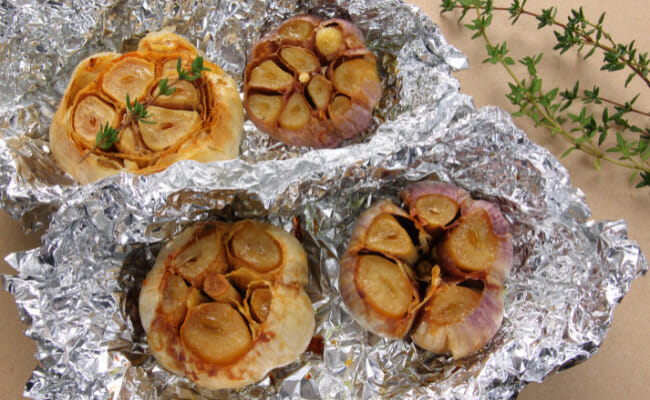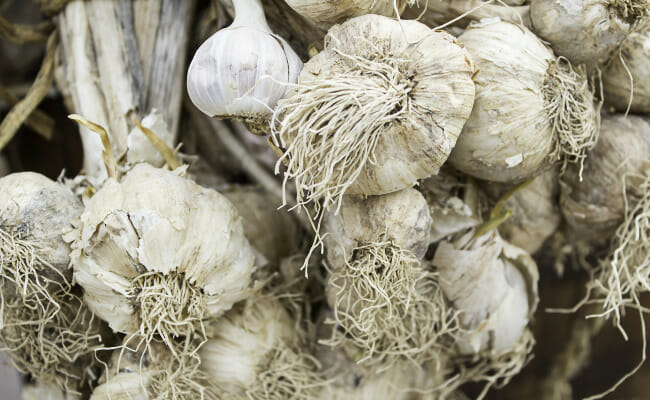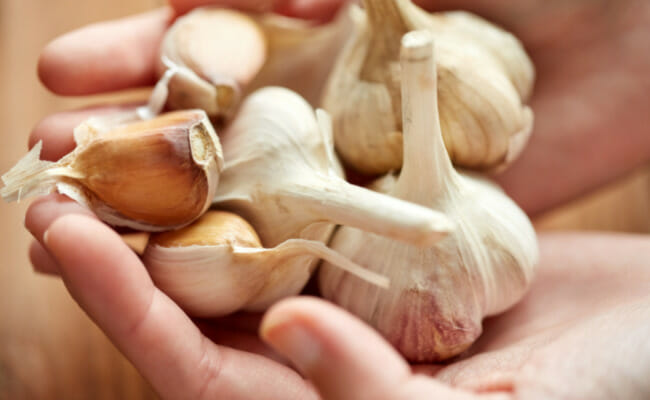How to Store Garlic So It Stays Fresh
Garlic, when spoiled, goes from a spicy bulb to a rotten nightmare. Your garlic can last for three to six months if you store it at the right temperature and under the conditions discussed in this guide.
Here, we will discuss the best garlic preservation practices available to the average Joe. Keep reading.
How long does garlic last?
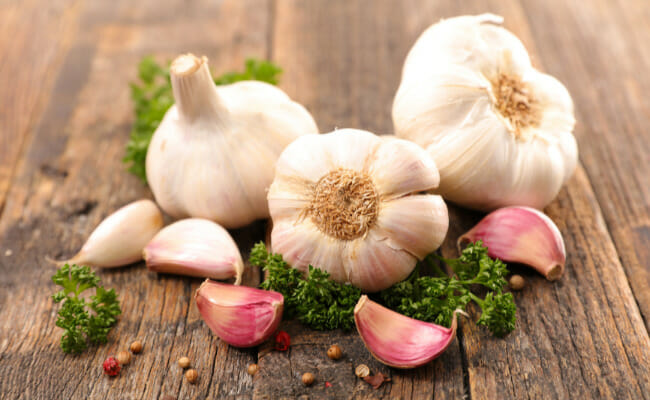
Like other members of the botanical family, amaryllis, garlic lasts up to a year when stored properly. The lifespan of a garlic bulb before getting spoiled largely depends on the storage method.
There is more than one method of preserving garlic, including freezing, storage under room temperature, dehydrating, roasting, and mincing with preservatives. All the above-listed methods have pros and cons, which will be discussed in this guide.
When kept in the dark at room temperature, the garlic can last for about half a year, but freezing can keep the garlic for one year. It is noteworthy to mention that consuming bad garlic is a no-no. Bad garlic can cause food-borne botulism, a disease that has proven fatal.
How to store garlic
The storage methods discussed in this guide are efficient for all types of garlic, including hard neck, soft neck, creole, and black garlic.
At room temperature
Unless there is provision for a freezer (or refrigerator) plus constant electricity, it is not advisable to tamper with your garlic bulb as the countdown to its expiry date starts ticking when tampered with.
In third-world countries where electricity is not constant, storing whole garlic bulbs under room temperature, constant airflow, and total darkness is the most cost-effective way of storing garlic.
It must be noted that the lack of constant airflow is a recipe for disaster when it comes to storing garlic. Keep them in mesh bags in an area where the air is not lacking, and don’t forget to keep the place dark because light fastens their ripening or spoilage process.
According to experts, the ideal temperature for storing whole garlic bulbs is 60-65 degrees Fahrenheit or 15-16 degrees Celsius, depending on where you come from.
In addition, do not keep them in wet areas. Even if the bulbs are not wet, keeping garlic near wet areas isn’t good either. Why? The H20 molecules in the water can make it into the air in the form of moisture and increase the atmospheric humidity, fast-tracking the spoilage process.
Dehydrate
Another way of preserving garlic is by dehydrating it. More than air, food-spoilage organisms need water to destroy foods. I’m not talking about external water since all the water content the bacteria need to act on the ginger is present in it.
Dehydrating ginger will reduce active metabolism and preserve its content. There’s no domestic way of dehydrating ginger bulbs without getting them burnt; hence we must chop them into slices to increase the area of our food that makes contact with the food dehydrator and prevent heating to the point of combustion.
First, peel the cloves off the garlic bulb and cut the garlic into thin slices. Note that the manner of cutting doesn’t have to be perfect or too small.
After cutting, place the garlic content into the food dehydrator. Don’t panic if a food dehydrator is unavailable in your home; an oven can also do the task. To use the oven, place the garlic slices on the baking sheet. Ensure the oven is at a temperature of 45 degrees Celsius or 115 degrees Fahrenheit (depending on your location) for about 30 minutes.
Ensure the garlic spices are crisp before taking them out of the dehydrator or oven. Dehydrating without storing the garlic slices in an airtight jar will reduce their shelf life. Keep in an airtight container.
Dehydrated garlic slices are useful in making garlic-flavored oil for dressing salad meals and several other dishes. Garlic-flavored oil must be frozen so it doesn’t spoil within three days. Freezing your garlic-flavored oil can guarantee you three weeks of shelf life.
Be warned to mix fresh, uncooked, or undehydrated garlic slices into the oil. Doing so might introduce the dreaded bacteria, clostridium botulinum, into the food sample.
Pickle
One of the most underrated methods of preserving garlic is to pickle it. Like other vegetables, you can preserve garlic by pickling. Two media are often used in pickling, namely vinegar and brine water.
All you need to pickle garlic are vinegar, a jar, and salt. The only disadvantage of the pickling method is that it alters the taste of the garlic preserves. The shelf life of pickled garlic is 3-6 months.
Roast
The oven is a common factor between the roasting and the dehydrating methods, but they are not the same. Unlike garlic dehydration, garlic roasting requires a very high temperature of 175 degrees Celsius or (or 350 degrees Fahrenheit) for a longer duration of 45 minutes. Before placing the garlic bulb in the oven, lubricate the baking dish using olive oil.
Greasing the baking dish with olive oil disallows the garlic from freezing when placed in a refrigerator. Thus, keeping the garlic content from being destroyed at low temperatures.
Note that you don’t have to slice the garlic bulb. Just remove the bulb tips and cloves by cutting after roasting. Then, squeeze out the soft portion into the airtight container.
After roasting, freeze the garlic container. The lifespan of roasted garlic exceeds that of dehydrated garlic.
Mince and freeze
Preservation does not come without its side effects. One of the commonest side effects of freezing minced garlic for a long time is that the frozen content won’t be as delicious as the fresh one, but half-bread is better than none.
To preserve your garlic using this method, peel off the cloves and Mince the garlic. Introduce little content of water or broth into the garlic and transfer the minced garlic content into an ice cube tray.
Then, store the ice cube trays in a refrigerator. You can rest assured that the stored garlic content will retain its taste after a month, provided the power supply is constant.
How to know a bad garlic
Preserving a clove of already bad garlic is a counterproductive act. Hence, it is important to be able to decipher a good garlic bulb from a bad one. You can identify spoiled garlic by its look, smell, and hardness. Follow the steps below to identify bad garlic bulbs.
Watch out for brown spots.
You can detect spoiled garlic without touching it by watching out for brown spots on its cloves. When its color changes from the usual white to yellow or brown, it indicates that the garlic has spoiled.
Use your nose to detect a change in smell.
Garlic has a characteristic spicy and pungent smell. If the garlic deviates from the normal garlic smell, that’s an indicator that it’s bad. Spoiled bulbs have a sour smell, unlike healthy ones.
Feel the garlic bulb
Good garlic is always firm and plump. Soft or mushy garlic is a bad one. Touch to feel the softness or hardness if you cannot detect it using color and smell.
Final Thoughts
The best way to store garlic without losing its taste is by mincing and freezing. However, the storage time should not exceed a month. If you want to store the garlic for over a year, the roasting and dehydration methods will do; the only disadvantage is that these two processes can alter the garlic taste.
We will rank pickling as the least advisable method even though it is effective. We hope you execute any one of these procedures and never throw away your garlic bulbs again.

